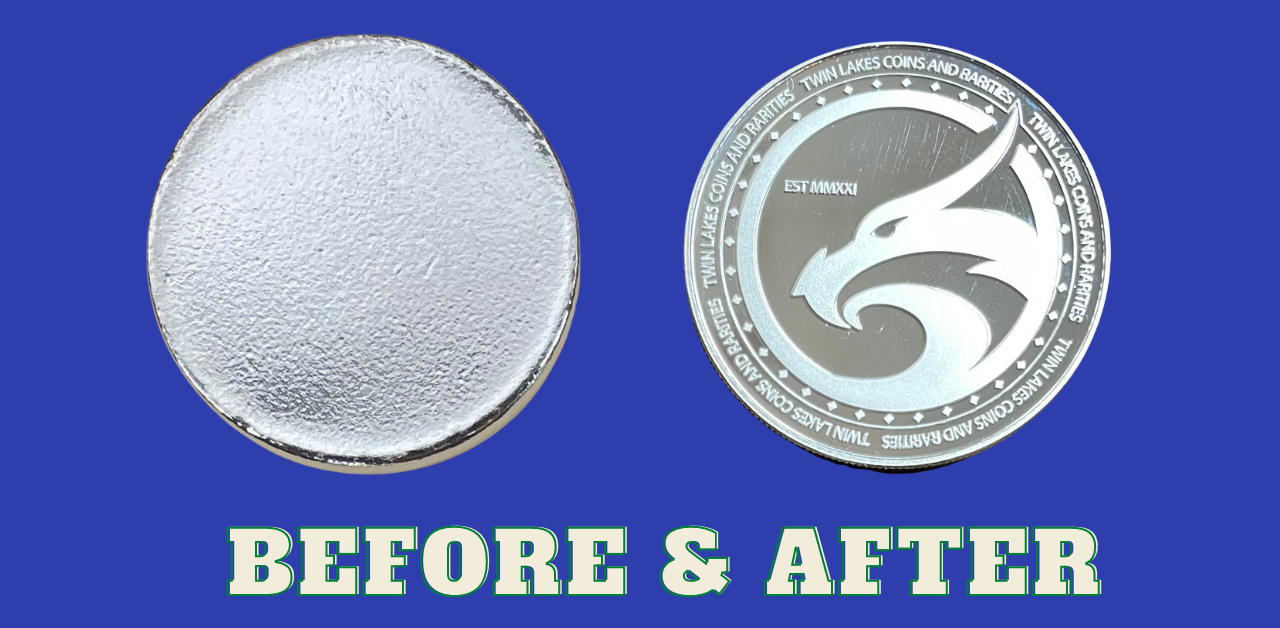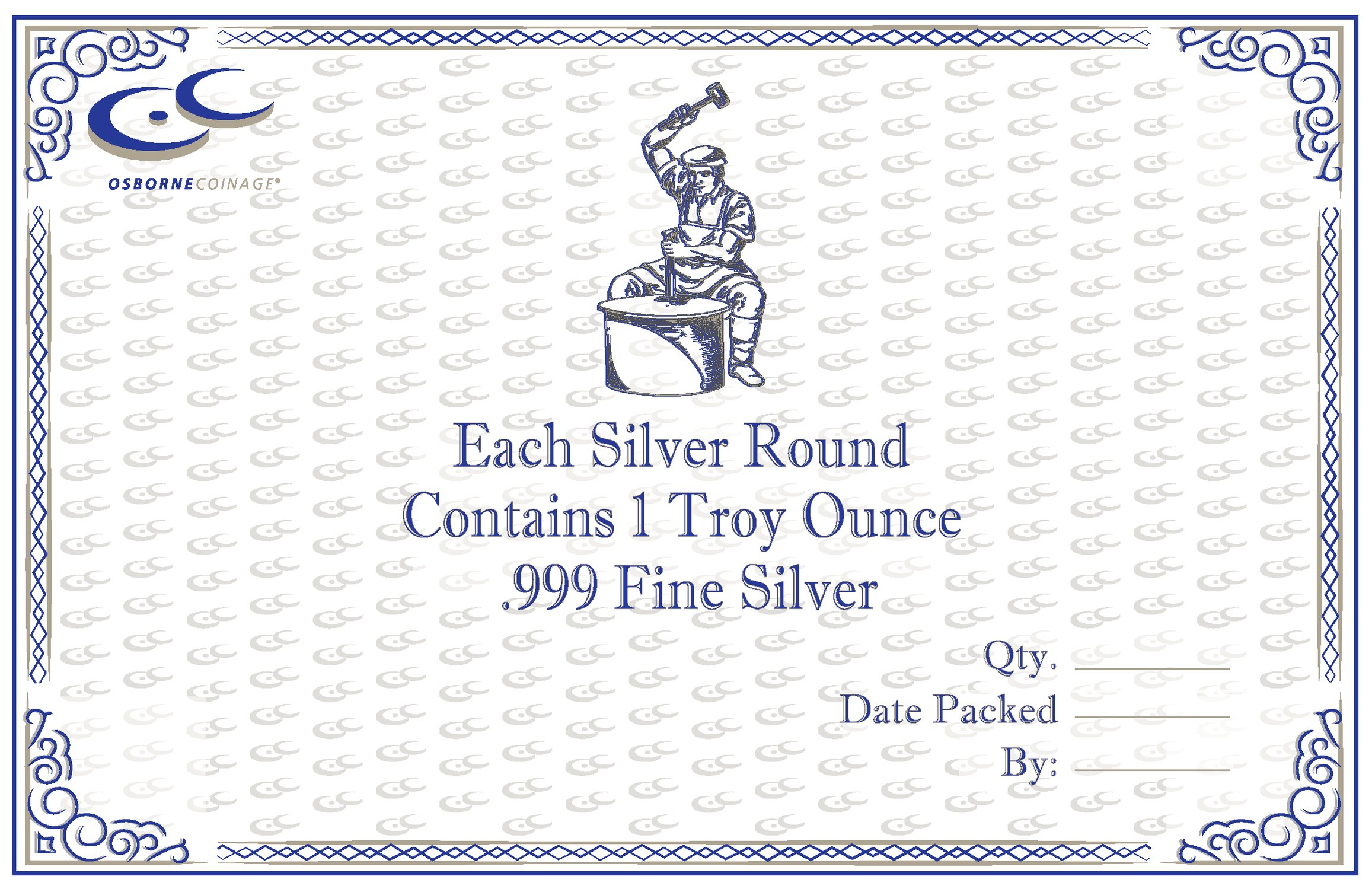
Process for Minting Silver
Before minting even begins, each blank is washed and weighed to ensure that it weighs AT LEAST one ounce. Additionally, the dies are pulled and carefully inspected to make sure there’s no damage on the surface. Damage could include dents, dings, scratches, cracks, or a degraded and worn image. If damage is not found, both dies are polished to ensure the background is smooth and blemish free – this is what gives our silver coins their classic mirror-like finish, and released to production.
Silver blanks are carefully inventoried and stored in a locked cage. When an order is ready to run, the exact number of blanks needed are brought to the operator working in a clean room.
Pre-Inspection
Before putting the dies in the machine, the operator inspects the dies again. If the dies aren’t clean enough or are worn, they are taken back to be cleaned and polished again, or even re-made. If they have to be re-made, Osborne absorbs the cost. You only pay for dies one time unless changes are made.
Each silver blank is inspected on both sides and then cleaned with an air puff to make sure there’s no remaining dust. The blank is  put into a hydraulic press and struck one or more times. The number of strikes needed is based on the design and what it takes to make sure the image is full. It may take one hit or it could take more. Remember, in die striking, we’re literally MOVING the metal so there are many factors in play to make sure the final product is up to our standards. That’s why only our most experienced employees work on silver orders.
put into a hydraulic press and struck one or more times. The number of strikes needed is based on the design and what it takes to make sure the image is full. It may take one hit or it could take more. Remember, in die striking, we’re literally MOVING the metal so there are many factors in play to make sure the final product is up to our standards. That’s why only our most experienced employees work on silver orders.
The "orange peel" look on the surface of the blank is completely normal and will be smoothed to a mirror finish once the blank is struck.
Completed Coins
Once the coin is struck, it’s carefully removed from the press, inspected again, and placed in a tray. Silver tarnishes easily and quickly, so anyone who touches silver is required to wear gloves and handle it by the edges. Each coin is struck individually, there’s nothing automatic about the process.
Silver dies need to be cleaned more frequently – sometimes in 50 strikes or less. This is a time-consuming, but very important, part of the production process to ensure the final coins meet our exacting standards.
Because of silver’s value, a reconciliation process takes place at the end of the run. Damaged or unusable blanks are returned as scrap.
Add-Ons
There are a few other options available to customers. Coins can be edge-numbered, edge-engraved, edge marked, or serial-numbered on the coin’s surface. This video shows the process of edge marking.
Once complete, the coins are either tissue wrapped (not preferred) or packed in airtight capsules. Packing them in capsules helps prevent tarnishing and scratches.
Packaging
Packaged coins are placed in a box with a signed and dated certificate of authenticity that shows the quantity and initials of the packer.

That’s the process for minting custom silver coins. It’s very time-consuming and “hands-on” due to the nature of silver and the desired results, but it's worth it to have a beautiful piece that will stand the test of time.
Interested in seeing more information about custom coins?
Here are some additional resources:
-
How to tell the difference between page turn and coin turn? Depending on how you turn it, the image is upside down or right side up. What's up with that?
-
How Dies are Used in the Coin Making Process? Dies are an integral part of coin making. Discover why in this blog.
- Learn the Difference Between Plain and Reeded Edge Coins. Edges matter.
- How Custom Coins are Made - a video tour
.png)
